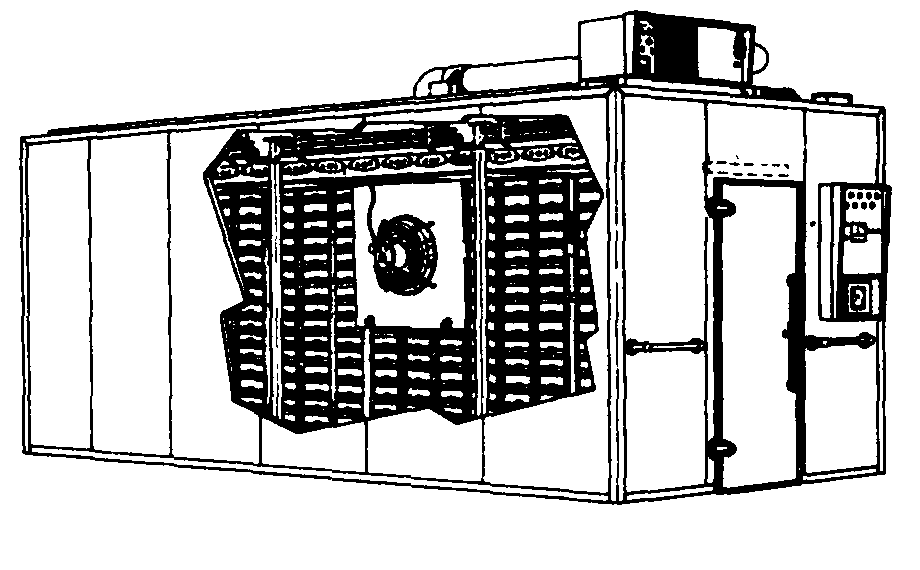孵化设备egg hatcher
孵化禽蛋的设备。孵化作业有孵化和出雏两个阶段,分别使用孵化机和出雏机进行孵化和出雏。一般在孵化部分孵18天,然后移至出雏部分,直至出壳。也可以在同一台机器上一次进行。
孵化机按照外表结构可分箱式和巷道式(房式)。箱式孵化机容蛋量常在5万枚以下,它的壳体表面材料为木板或铝板,中间夹有良好的隔热材料,其蛋盘支架可为蛋盘架式和蛋盘车式,前者蛋盘支架固定,后者蛋盘支架为一小车,可进出孵化机,有利于装卸蛋盘。巷道式孵化机容蛋量可达10万枚以上,其蛋盘支架皆为蛋盘车式。蛋盘车由一端推入,逐次前移,最后由另一端推出。中国生产较多的是箱式孵化机,容量约8000~18000枚。
鸡的孵化环境条件:❶温度。孵化期为37.8℃;出雏期为37.3℃,要求机内温度均匀,各点之温差不应超过±0.3℃。
❷相对湿度。孵化期为53~57%;出雏期为70%左右。
❸空气质量。二氧化碳含量不超过0.5%。孵化期要求每1~2小时翻一次蛋,以免粘壳。所以,孵化机必须保证内部温度均匀,要求能自动调节温度、相对湿度,自动控制机内通风,以及定期翻蛋。
孵化机主要由箱体、蛋盘支架、换气扇、电热器、调湿装置、翻蛋机构和电器控制系统等组成(图)。装有禽蛋的蛋盘逐层插入蛋盘支架。每台孵化机可有数组蛋盘支架。电热器和调湿装置用来向机体提供孵化所需的热量和湿度。换气扇的作用是向机内提供新鲜空气,排除废气和使机内各处的温湿度均匀一致。翻蛋机构由电动机、减速器和传动杆件等组成,用来驱动蛋盘支架的可动部分作左右45°倾斜。有的孵化机蛋盘活动支架由液压油缸直接翻转。温湿度的控制是通过传感器、继电器等实现。调湿方式有水盘自然蒸发、水幕自然蒸发、水盘电热蒸发、水轮溅水蒸发、电磁阀控制喷雾蒸发等多种形式。

鸡蛋在破壳前2~3天需由蛋盘倒入出雏盘,并移至出雏机的出雏盘架上。出雏机的结构和工作原理与孵化机基本相同,主要区别是没有翻蛋机构。大型出雏机的出雏盘架多为可移动式。